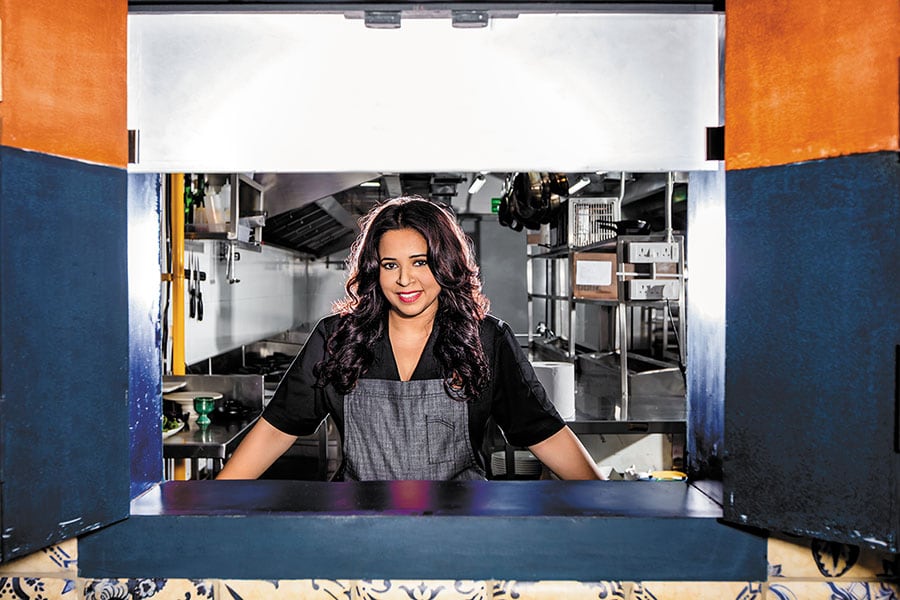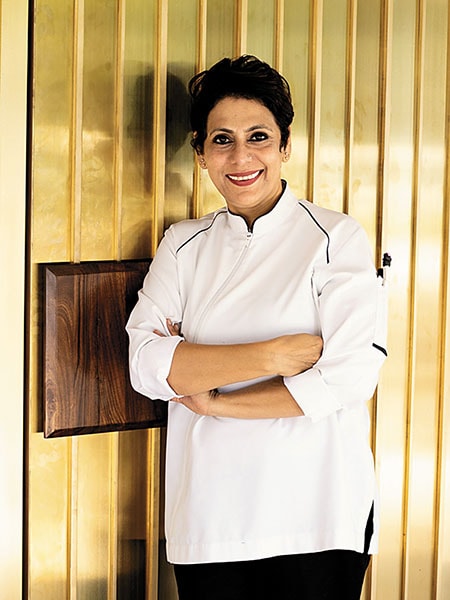
Putting a face to the food
The new generation of chefs is becoming synonymous with its own restaurants, while blending global experience with food trends
 Pallavi Jayswal of Uno Más
Pallavi Jayswal of Uno MásImage: Ayush Das
In 2012, Saransh Goila undertook a 20,000-km long, 100-day road trip across India to discover the country’s rich food heritage. His findings and experiences culminated in him launching Goila Butter Chicken, a takeaway brand, in Mumbai in 2013, followed by his take on butter chicken being featured in Masterchef Australia (where he was a guest judge) in 2018. An iconic dish that has defined Indian food worldwide, butter chicken also made Goila one of the many to put India on the global food map, all over again.
Goila is part of a new generation of restaurateurs and chefs, who, inspired by veterans such as Manish Mehrotra of Indian Accent and Ritu Dalmia of Diva, are becoming the face of their enterprises by going beyond the generic, and riding on global tastes and trends.
By observing the international food landscape, there are two trends that take shape: First is the concept of hyperlocal ingredients, with chefs sourcing ingredients locally—sometimes actually from their own backyards—and using traditional cooking methods to churn out popular regional delicacies in new formats. The second trend is of chefs cooking micro-regional cuisines from their neighbourhoods, or picking a world cuisine and serving it in its original form.
To achieve these ends, those in the business are realising the power of collaborations that enable a convergence of many minds to formulate dining concepts. One example of this is the coming together of Food Matter (Gauri Devidayal and Jay Yousuf’s hospitality group that runs Mumbai’s The Table and Magazine Street Kitchen) and Neighbourhood Hospitality (Abhishek Honawar, Pankil Shah and Sumit Gambhir’s enterprise that runs Woodside Inn, The Pantry, and Bombay Vintage). Sharing success in Mumbai’s food scene, the brains behind the two groups decided to get together— dubbing themselves The Colaba Cartel—to address SoBo’s thirst for stand-alone haunts.
 Bawmra Jap of Bomra’s
Bawmra Jap of Bomra’sImage: Magazine ST Kitchen
While this collaboration was cooking, Bomra’s was born in the bylanes of Candolim in Goa. Chef Bawmra Jap, from northern Myanmar, had moved to India because of his wife’s research work, and decided to exercise his natural skillsets and Burmese roots to open the restaurant in 2004, which quickly gathered much critical acclaim. Last August, Jap became consultant chef at Miss T, a Southeast Asian restaurant in Mumbai, conceptualised by The Colaba Cartel. With Jap, the Cartel dealt a winning hand to nail a concept that appealed to the city’s dining sentiments.
While Bawmra popularised Burmese cuisine in India, Pallavi Jayswal, chef and co-founder of Uno Más, brought in Spanish flavours. “Nessun Dorma Food Ventures isn’t really a company that belongs to me. But actually an idea where I belong,” says Jayswal. “It’s much more than a company to me and, in a sense, an extension of myself.”
(This story appears in the 30 November, -0001 issue of Forbes India. To visit our Archives, click here.)



 Julia Carmen Desa of Tres
Julia Carmen Desa of Tres.jpg) Patissier Toshin Shetty
Patissier Toshin Shetty.jpg) Esdras Ochoa, chef at Sancho’s in Khar, Mumbai
Esdras Ochoa, chef at Sancho’s in Khar, Mumbai




